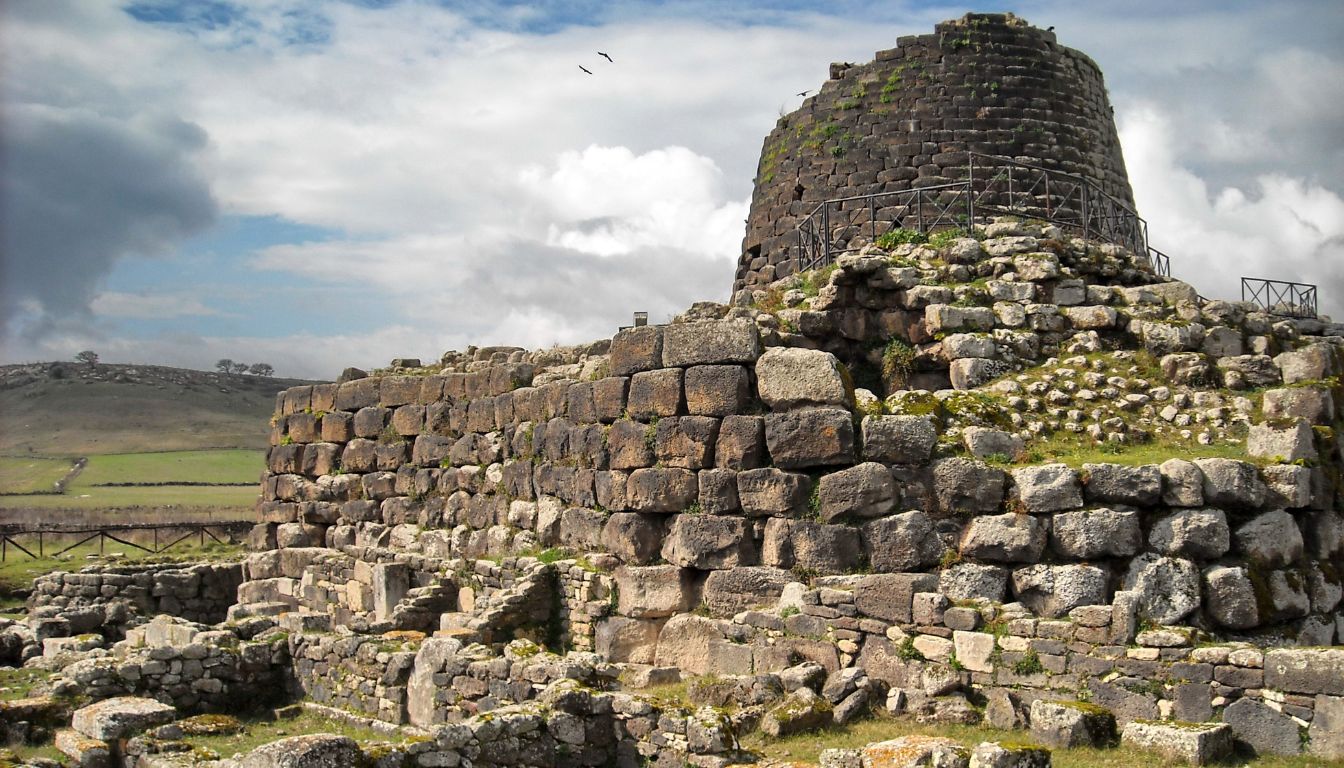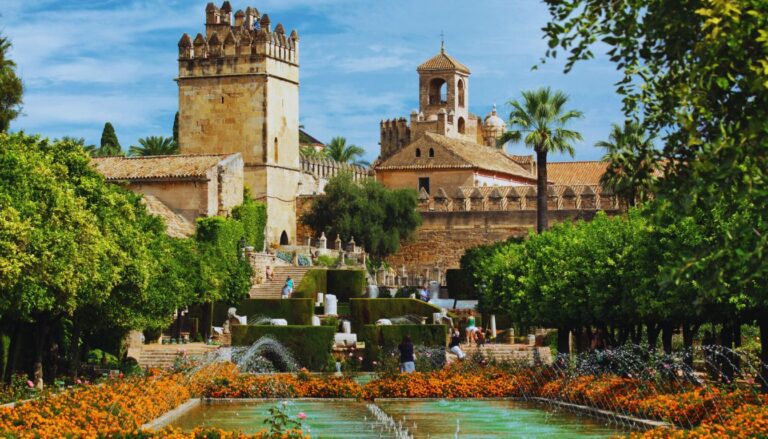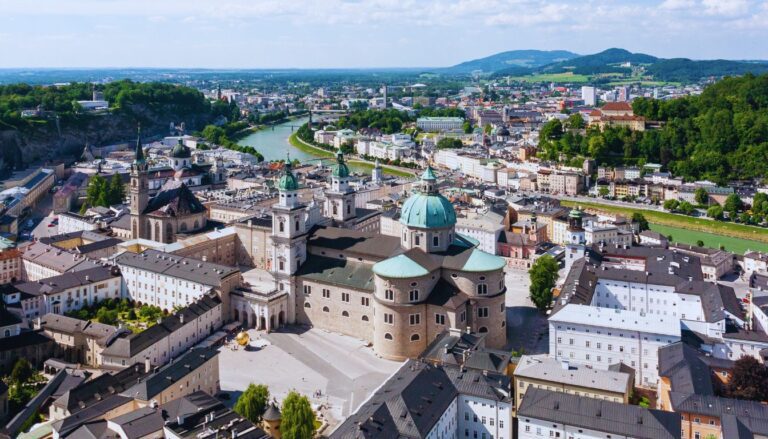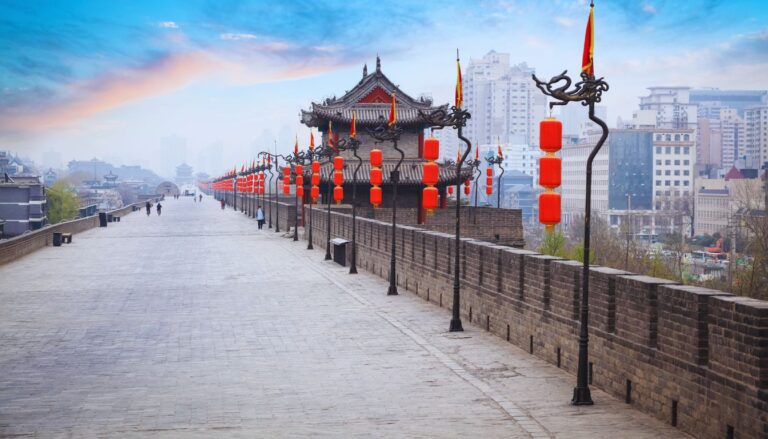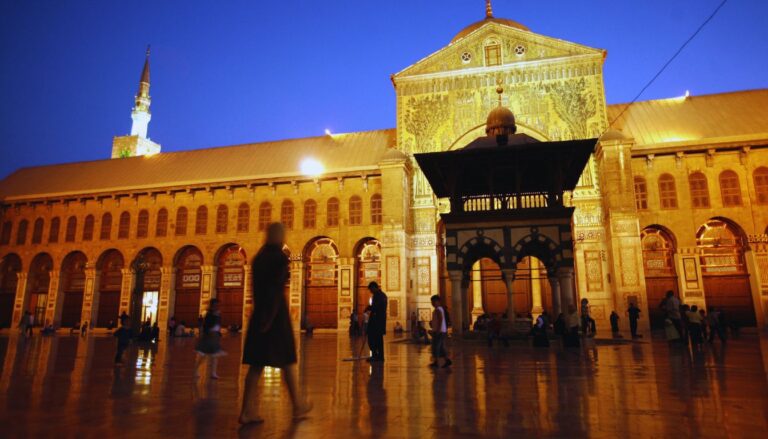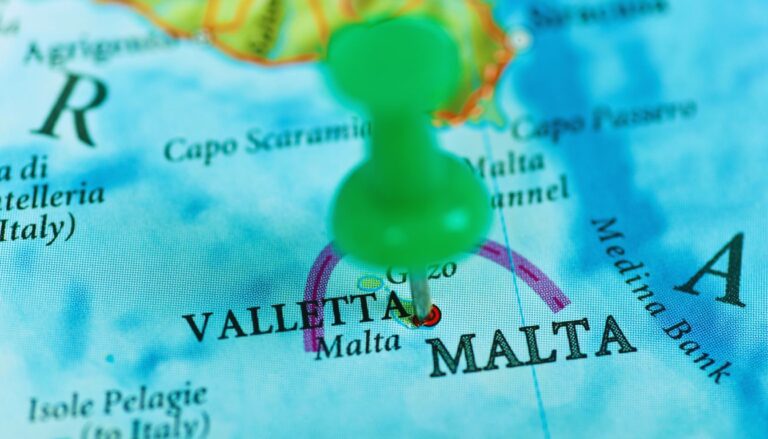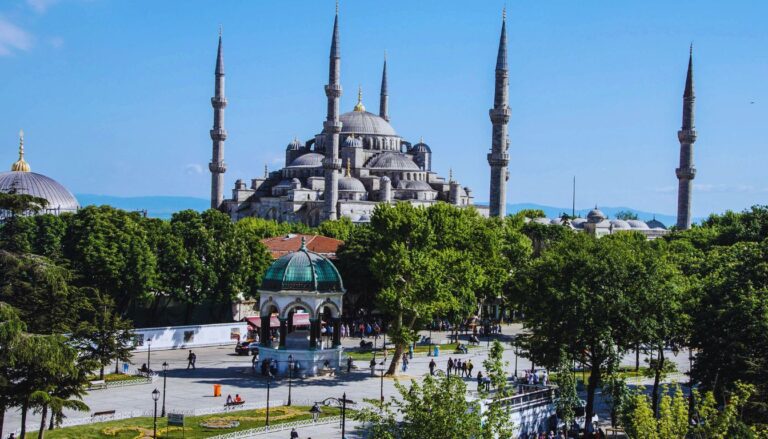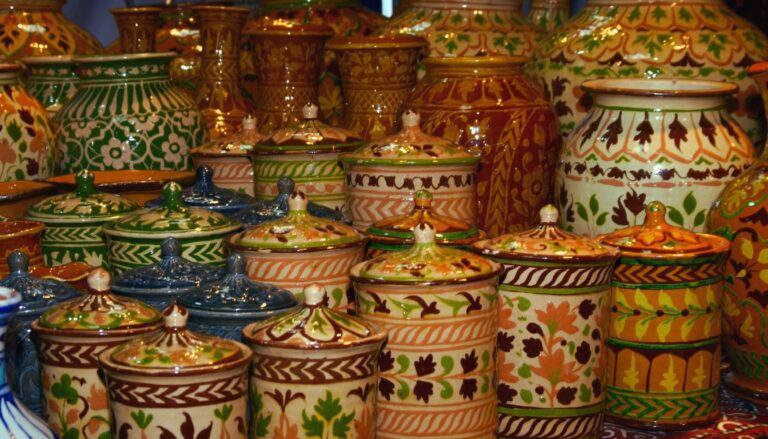Nestled in the heart of the Mediterranean, the island of Sardinia holds the key to one of the most fascinating yet enigmatic civilizations of ancient Europe – the Nuragic civilization. Named after their most iconic structures, the nuraghi, this Bronze Age culture flourished on the island for over a millennium, leaving behind a legacy that continues to captivate archaeologists, historians, and curious minds alike.
The Nuragic civilization emerged around 1800 BCE and thrived until about 500 BCE, spanning a period that saw the rise and fall of many great Mediterranean civilizations. Despite their long history and impressive achievements, much about the Nuragic people remains shrouded in mystery. They left no written records, and much of what we know about them comes from the monumental structures they built and the artifacts they left behind.
What makes the Nuragic civilization particularly intriguing is its uniqueness. While they traded and interacted with other Mediterranean cultures, the Nuragic people developed a distinct identity that set them apart from their contemporaries. Their sophisticated bronze work, complex architectural designs, and mysterious religious practices paint a picture of a highly advanced society that flourished in relative isolation.
As we embark on this exploration of the Nuragic civilization, we’ll uncover the wonders of their iconic towers, delve into their daily lives, marvel at their artistic achievements, and ponder the mysteries that still surround their eventual decline. Join us on this journey through time as we unveil the secrets of Sardinia’s Bronze Age marvel – the Nuragic civilization.
Table of Contents
The Origins and Timeline of Nuragic Culture
The story of the Nuragic civilization begins in the misty depths of Sardinian prehistory. While the exact origins of this culture remain a subject of debate among archaeologists, it’s generally agreed that the Nuragic civilization emerged around 1800 BCE, during the Bronze Age.
Timeline of Nuragic Culture:
- Early Bronze Age (1800-1600 BCE): The first proto-nuraghi appear, simple structures that would evolve into the iconic towers.
- Middle Bronze Age (1600-1300 BCE): This period sees the development of the classic nuraghe tower and the beginning of more complex social organization.
- Late Bronze Age (1300-900 BCE): The peak of Nuragic civilization, characterized by the construction of complex nuraghi and the flourishing of Nuragic art and trade.
- Early Iron Age (900-500 BCE): The final phase of Nuragic culture, marked by increased contact with other Mediterranean civilizations and eventual decline.
The origins of the Nuragic people are not entirely clear. Some theories suggest they developed from the earlier Beaker culture that was present in Sardinia during the Copper Age. Others propose that they might have had connections to other Mediterranean island cultures, such as those of the Balearic Islands or Corsica.
What is clear is that the Nuragic culture didn’t emerge in isolation. Archaeological evidence suggests that Sardinia had been inhabited since the Paleolithic era, and the island had seen the rise and fall of several cultures before the Nuragic period. The Nuragic people likely built upon the knowledge and traditions of these earlier inhabitants, developing their unique culture over time.
One of the most intriguing aspects of Nuragic origins is their apparent suddenness. The appearance of the first nuraghi marked a significant leap in architectural sophistication compared to earlier structures on the island. This has led some researchers to speculate about possible outside influences or technological transfers that might have sparked this development.
However, as the Nuragic culture developed, it became increasingly distinct from other Mediterranean civilizations. The nuraghi themselves have no exact parallels elsewhere in the ancient world, and many aspects of Nuragic material culture are unique to Sardinia.
Understanding the origins and timeline of the Nuragic civilization is crucial for appreciating its development and significance. As we delve deeper into various aspects of Nuragic culture in the following sections, we’ll see how this civilization evolved over time, reaching its peak in the Late Bronze Age before eventually declining in the face of changing Mediterranean dynamics.
Nuraghe: The Iconic Stone Towers
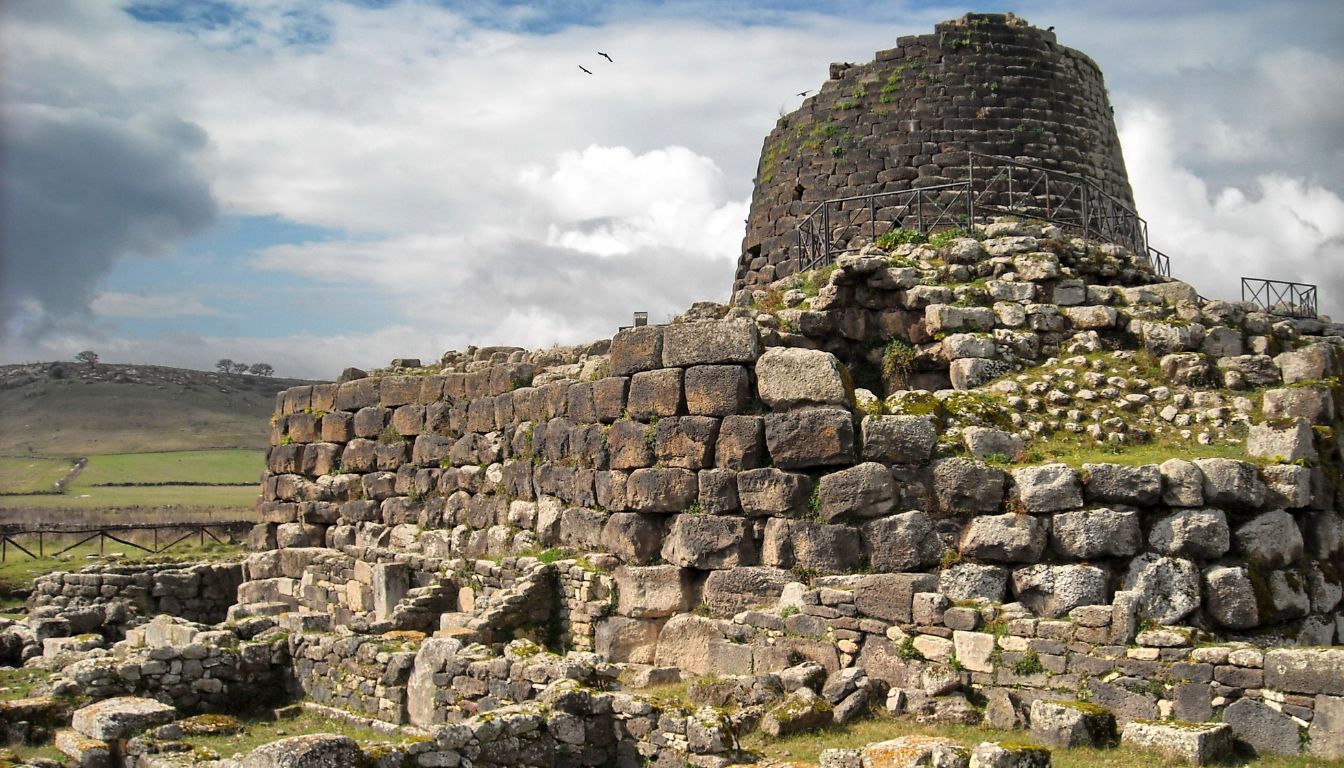
The nuraghe, plural nuraghi, are the defining feature of the Nuragic civilization and the source of its name. These impressive stone towers dot the Sardinian landscape, with over 7,000 known examples, ranging from simple structures to complex fortifications. Their ubiquity and durability have made them enduring symbols of Sardinia’s ancient past.
Characteristics of Nuraghi:
- Structure: A typical nuraghe is a tower-like structure with a truncated conical shape. It’s built using large stones, often without mortar, in a technique known as dry-stone masonry.
- Interior: The interior usually consists of one or more chambers with a domed ceiling, connected by corridors and stairs built within the thick walls.
- Height: Nuraghi can reach heights of up to 20 meters (65 feet), though many are smaller.
- Complexity: While some nuraghi are simple towers, others are part of larger complexes that include multiple towers, walls, and additional structures.
The purpose and function of nuraghi have been subjects of much debate among archaeologists. Some of the proposed functions include:
- Defensive structures: Their tower-like form and strategic locations suggest a defensive purpose.
- Dwellings: Some nuraghi show evidence of long-term habitation.
- Storage facilities: The cool, dry interiors would have been ideal for storing food.
- Religious or ceremonial centers: Some nuraghi appear to have had ritual significance.
- Status symbols: The size and complexity of a nuraghe might have reflected the power and wealth of a community or leader.
It’s likely that nuraghi served multiple purposes, and their function may have changed over time.
The construction of a nuraghe was a significant undertaking that required considerable planning, labor, and resources. The largest and most complex nuraghi, such as Su Nuraxi di Barumini (a UNESCO World Heritage site), demonstrate the impressive engineering and organizational skills of the Nuragic people.
The evolution of nuraghi over time provides insights into the development of Nuragic society:
- Early nuraghi (proto-nuraghi) were simpler structures, often with irregularly shaped rooms.
- Classic nuraghi, which appeared around 1600 BCE, featured the distinctive conical tower shape and more sophisticated internal structures.
- Complex nuraghi, developed in the Late Bronze Age, included multiple towers and extensive outer fortifications.
The nuraghi remain one of the most impressive and mysterious legacies of the Nuragic civilization. These ancient towers continue to captivate visitors to Sardinia and provide archaeologists with valuable insights into this enigmatic Bronze Age culture.
Social Structure and Daily Life in Nuragic Society
Understanding the social structure and daily life of the Nuragic people is challenging due to the lack of written records. However, archaeological evidence provides valuable insights into how these ancient Sardinians lived and organized their society.
Social Structure:
The Nuragic society appears to have been hierarchical, with clear signs of social stratification:
- Elite class: Likely consisted of warrior-chiefs, priests, and skilled craftspeople. They probably lived in or controlled the larger, more complex nuraghi.
- Common people: Farmers, herders, and laborers who formed the majority of the population.
- Possible slave class: Some evidence suggests the existence of a lower class or slaves, though this is debated.
The presence of large, complex nuraghi suggests the existence of powerful local leaders or chiefs who could mobilize significant resources and labor. However, there’s no evidence of a centralized state or monarchy governing all of Sardinia during this period.
Daily Life:
- Housing: While some people may have lived in nuraghi, most probably resided in smaller dwellings around these structures. Houses were typically circular, built of stone with thatched roofs.
- Agriculture: The Nuragic people practiced agriculture, growing crops such as wheat, barley, and legumes. Terracing was used to cultivate hilly areas.
- Animal husbandry: Sheep, goats, cattle, and pigs were raised for meat, milk, and wool. The importance of cattle in Nuragic society is reflected in their frequent depiction in bronze figurines.
- Crafts: Metalworking, particularly bronze-working, was highly developed. Pottery, textile production, and stone carving were also important crafts.
- Trade: Evidence suggests active trade within Sardinia and with other Mediterranean cultures, particularly for metals.
- Warfare: The defensive nature of many nuraghi and the presence of weapons in archaeological finds indicate that warfare or raiding was a part of Nuragic life.
- Religion: Religious practices appear to have played a significant role in daily life, with many activities likely having ritual components.
Gender Roles:
While definitive information is limited, some insights into gender roles can be gleaned from archaeological evidence:
- Female figurines, some depicted as warriors, suggest women may have held important roles in Nuragic society.
- The presence of weapons in male burials indicates a warrior culture, possibly with a predominantly male warrior class.
Family and Community:
The layout of Nuragic settlements suggests a society organized around extended family or clan groups. The nuraghe itself might have served as a focal point for community activities and decision-making.
Despite the challenges in reconstructing Nuragic daily life, the archaeological record paints a picture of a complex society with developed agriculture, skilled craftsmanship, and rich cultural practices. As we continue to uncover more about this fascinating civilization, our understanding of Nuragic social structure and daily life continues to evolve.
Nuragic Art and Craftsmanship
The Nuragic civilization left behind a rich legacy of art and craftsmanship that provides valuable insights into their culture, beliefs, and technological capabilities. From intricate bronzetti figurines to impressive stone sculptures, Nuragic art showcases the skill and creativity of these ancient Sardinians.
Bronze Work:
The Nuragic people were particularly renowned for their bronze work. Key examples include:
- Bronzetti: Small bronze figurines depicting humans, animals, and boats. These often portrayed warriors, chiefs, priests, and deities, offering glimpses into Nuragic society and beliefs.
- Votive swords: Elaborately decorated bronze swords, likely used for ceremonial purposes rather than combat.
- Navicelle: Bronze models of boats, possibly representing votive offerings or symbolizing the importance of sea trade.
The level of detail and craftsmanship in these bronze items indicates highly skilled artisans and sophisticated metalworking techniques.
Stone Sculpture:
While less common than bronze work, Nuragic stone sculptures are equally impressive:
- Mont’e Prama Giants: Larger-than-life stone statues discovered near Oristano, depicting warriors, archers, and boxers. These are among the earliest examples of large-scale sculpture in the Mediterranean.
- Betili: Stone pillars or menhirs, often found in religious contexts, some decorated with stylized female figures.
Pottery:
Nuragic pottery evolved over time, showing increasing sophistication:
- Early periods: Simple, undecorated pottery.
- Later periods: More complex forms and decorative techniques, including geometric patterns and stylized animal motifs.
Textiles and Jewelry:
While few examples survive, evidence suggests the Nuragic people produced textiles and jewelry:
- Loom weights and spindle whorls indicate textile production.
- Gold and silver jewelry, including rings, bracelets, and necklaces, have been found in Nuragic sites.
Architectural Craftsmanship:
The nuraghi themselves are perhaps the most impressive examples of Nuragic craftsmanship:
- The precision of stone-cutting and the complexity of construction demonstrate advanced architectural knowledge.
- The evolution of nuraghi design over time shows ongoing innovation and refinement of building techniques.
Symbolism and Styles:
Nuragic art often incorporated symbolic elements:
- Frequent depiction of animals, particularly bulls, suggests their importance in Nuragic culture.
- Geometric patterns and stylized human figures are common, especially in later periods.
The style of Nuragic art is distinctive, showing some influences from other Mediterranean cultures but maintaining its unique character. This distinctiveness has helped archaeologists identify Nuragic artifacts in other parts of the Mediterranean, providing evidence of trade networks.
The art and craftsmanship of the Nuragic civilization not only demonstrate the technical skills of these ancient Sardinians but also offer valuable insights into their society, beliefs, and connections with the wider Mediterranean world. As ongoing archaeological work continues to uncover new artifacts, our understanding of Nuragic artistic expression continues to grow and evolve.
Religious Beliefs and Rituals
The religious beliefs and practices of the Nuragic civilization remain one of the most intriguing and mysterious aspects of their culture. While the lack of written records makes it challenging to fully understand their spiritual world, archaeological evidence provides fascinating glimpses into Nuragic religion.
Sacred Sites:
- Well Temples: These elaborate structures, featuring underground chambers accessed by staircases, are believed to have been centers of water cult rituals. The most famous is the Well Temple of Santa Cristina.
- Megaron Temples: Rectangular structures that may have been used for religious ceremonies. The Temple of Malchittu is a well-preserved example.
- Sacred Pits: Circular structures dug into the ground, often containing votive offerings. These might have been used for chthonic (underworld) cults.
- Nuraghi: While primarily defensive or residential, some nuraghi show evidence of religious use, particularly in later periods.
Deities and Beliefs:
While we don’t know the names or exact nature of Nuragic deities, certain themes emerge:
- Nature worship: The importance of well temples suggests a reverence for water and possibly earth goddesses.
- Astral cults: Some structures appear aligned with celestial events, indicating possible sun or star worship.
- Animal cults: The frequent depiction of animals, especially bulls, in Nuragic art suggests their religious significance.
Rituals and Practices:
Archaeological evidence hints at various religious practices:
- Votive offerings: Bronze figurines, weapons, and other objects were often deposited at sacred sites, possibly as offerings to deities.
- Libations: The presence of special vessels and channels in well temples suggests the pouring of liquids as part of rituals.
- Communal ceremonies: The size of some religious structures indicates large-scale, communal religious events.
- Funerary rites: Burial practices, including the use of collective tombs (Giants’ Tombs), provide insights into Nuragic beliefs about death and the afterlife.
Priesthood:
The existence of a priestly class is suggested by:
- Complex religious architecture requiring specialized knowledge to construct and maintain.
- Elaborate bronze figurines depicting figures that might represent priests or priestesses.
Evolution of Religious Practices:
Nuragic religion appears to have evolved over time:
- Early periods: Focus on nature worship and possibly ancestor cults.
- Later periods: More complex rituals and possibly the emergence of anthropomorphic deities.
Influences and Interactions:
While Nuragic religion maintained its distinct character, there’s evidence of interaction with other Mediterranean cultures:
- Some later Nuragic bronzes show influences from Greek and Phoenician religious iconography.
- The presence of exotic items in religious contexts suggests possible incorporation of foreign elements into local practices.
The religious beliefs and practices of the Nuragic civilization reflect a complex and sophisticated spiritual world. These ancient Sardinians appear to have had a deep connection to their natural environment, a rich mythological tradition, and elaborate ritual practices. As archaeology continues to uncover new sites and artifacts, our understanding of Nuragic religion continues to evolve, offering fascinating insights into the spiritual life of this enigmatic Bronze Age culture.
The Bronze Age Economy of Nuragic Sardinia
The economy of Nuragic Sardinia was diverse and sophisticated, reflecting the civilization’s long period of development and its interactions with other Mediterranean cultures. At its core, the Nuragic economy was based on agriculture and animal husbandry, but it also included significant metallurgical activities and long-distance trade.
Agriculture and Animal Husbandry:
- Crop Cultivation: The Nuragic people cultivated a variety of crops, including:
- Cereals: Wheat and barley were staple crops.
- Legumes: Beans and lentils supplemented the diet.
- Fruits: Evidence suggests the cultivation of grapes and possibly olives.
- Animal Husbandry: Livestock played a crucial role in the Nuragic economy:
- Sheep and goats were raised for meat, milk, and wool.
- Cattle were important for meat, milk, and as draft animals.
- Pigs were also part of the Nuragic livestock.
- Land Management: The Nuragic people demonstrated advanced land management techniques:
- Terracing was used to cultivate hilly areas.
- Evidence of crop rotation suggests sophisticated agricultural knowledge.
Metallurgy:
Metalworking, particularly bronze production, was a key component of the Nuragic economy:
- Resource Extraction: Sardinia is rich in metal ores, including copper and lead.
- Bronze Production: The Nuragic people were skilled in producing bronze, an alloy of copper and tin.
- Craftsmanship: High-quality bronze items, from tools to artistic objects, were produced.
- Trade: Nuragic bronzework was prized and traded across the Mediterranean.
Trade and Exchange:
The Nuragic civilization engaged in both internal and external trade:
- Internal Trade: Evidence suggests active exchange between different regions of Sardinia.
- Mediterranean Trade: Nuragic artifacts have been found across the Mediterranean, indicating extensive trade networks:
- Nuragic bronzes have been discovered in mainland Italy, Sicily, and as far as Crete.
- Imported items found in Sardinia include Mycenaean pottery and Baltic amber.
- Maritime Activity: The presence of boat models (navicelle) in Nuragic art suggests the importance of seafaring.
Craft Production:
Besides metallurgy, other crafts contributed to the Nuragic economy:
- Pottery: Production ranged from everyday wares to fine, decorated pieces.
- Textiles: Evidence of loom weights and spindle whorls indicates textile production.
- Stone Working: From nuraghi construction to sculpture, stone working was a significant activity.
Social and Economic Organization:
The complexity of Nuragic economy suggests a well-organized society:
- Specialization: The quality of craftsmanship indicates the presence of full-time artisans.
- Surplus Production: The ability to build monumental structures suggests agricultural surplus.
- Social Stratification: Differences in grave goods and housing suggest economic inequality.
Environmental Impact:
The Nuragic economy had a significant impact on the Sardinian landscape:
- Deforestation: Large-scale bronze production and construction likely led to increased deforestation.
- Land Modification: Agricultural terracing and the construction of thousands of nuraghi permanently altered the landscape.
The economy of Nuragic Sardinia was dynamic and multifaceted, combining local resource exploitation with long-distance trade. This economic system supported a complex society capable of monumental construction and sophisticated artistic production. The legacy of this Bronze Age economy can still be seen in the thousands of nuraghi that dot the Sardinian landscape, testament to the organizational and productive capabilities of this fascinating civilization.
Nuragic Warfare and Defensive Strategies
While the Nuragic civilization is not primarily known for its military prowess, evidence suggests that warfare and defense were significant aspects of their society. The imposing nuraghi themselves serve as the most visible testament to the importance of defensive strategies in Nuragic culture.
Defensive Architecture:
- Nuraghi: These iconic towers were likely built with defense in mind:
- Thick walls and narrow entrances made them difficult to breach.
- Height provided a vantage point for spotting approaching threats.
- Complex nuraghi with multiple towers and curtain walls offered formidable defense.
- Strategic Locations: Many nuraghi were built on hilltops or other easily defensible positions.
- Village Fortifications: Some Nuragic villages were surrounded by walls, indicating a need for communal defense.
Weapons and Armor:
Archaeological finds provide insights into Nuragic military equipment:
- Bronze Swords: Both functional weapons and ceremonial swords have been found.
- Daggers and Knives: Close-combat weapons were common.
- Bows and Arrows: Arrowheads suggest the use of ranged weapons.
- Spears and Javelins: Both for hunting and warfare.
- Armor: Bronze fragments suggest the use of body armor, possibly similar to that seen in bronze figurines.
Military Organization:
While details are scarce, some inferences can be made:
- Warrior Class: The presence of elaborately decorated weapons and warrior figurines suggests a distinct warrior class.
- Clan-Based Organization: It’s likely that military units were organized along family or clan lines.
- Leaders: Larger, more complex nuraghi may have been controlled by powerful warrior-chiefs.
Warfare Practices:
The nature of Nuragic warfare can be inferred from archaeological evidence:
- Raids: The defensive nature of settlements suggests a threat from raids rather than large-scale invasions.
- Inter-Village Conflict: Competition between Nuragic communities may have been a source of conflict.
- External Threats: As the Nuragic civilization came into contact with other Mediterranean powers, they may have faced new military challenges.
Symbolic Aspects of Warfare:
Warfare in Nuragic society likely had symbolic as well as practical aspects:
- Warrior Cult: The prominence of warrior figures in Nuragic art suggests a glorification of the warrior ideal.
- Ritual Combat: Some evidence hints at the possibility of ritualized combat or contests.
Evolution of Military Strategies:
Nuragic defensive strategies appear to have evolved over time:
- Early Period: Simple, single-tower nuraghi suggest smaller-scale conflicts.
- Middle Period: The development of more complex nuraghi indicates an escalation in warfare.
- Late Period: Some nuraghi show signs of abandonment or repurposing, possibly reflecting changing patterns of conflict.
Naval Warfare:
Given Sardinia’s island nature, naval capabilities were likely important:
- Boat Models: The presence of bronze boat models (navicelle) might indicate the importance of sea power.
- Coastal Defenses: Some nuraghi were positioned to overlook the sea, possibly as a defense against maritime raids.
The warfare and defensive strategies of the Nuragic civilization reflect a society that, while not constantly at war, was prepared for conflict. The impressive defensive architecture of the nuraghi, combined with evidence of weapons and warrior imagery, paints a picture of a culture that valued military prowess and was capable of organizing significant defensive efforts. As with many aspects of Nuragic society, ongoing archaeological research continues to refine our understanding of their military practices and defensive strategies.
The Mysterious Decline of the Nuragic Civilization
The decline of the Nuragic civilization is one of the most intriguing mysteries of Mediterranean prehistory. After flourishing for over a millennium, this unique culture began to fade away in the early Iron Age, around 900-500 BCE. The process of decline was gradual and complex, with no single, clear-cut cause.
Possible Factors Contributing to Decline:
- Climate Change:
- Some evidence suggests a period of climate change around 900-800 BCE.
- Drier conditions may have put stress on agricultural production.
- Resource Depletion:
- Intensive bronze production may have led to the depletion of easily accessible copper ores.
- Deforestation, driven by fuel needs for metallurgy and construction, could have impacted the environment.
- Social and Political Changes:
- There’s evidence of abandonment or repurposing of some nuraghi, suggesting social reorganization.
- Possible internal conflicts or power struggles may have weakened Nuragic society.
- External Pressures:
- Increased contact with other Mediterranean civilizations, particularly Phoenicians and Greeks, brought new cultural influences.
- Potential conflicts with these expanding maritime powers may have strained Nuragic resources.
- Economic Shifts:
- Changes in Mediterranean trade networks may have reduced demand for Nuragic bronzework.
- The rise of iron technology could have diminished the importance of Sardinia’s bronze industry.
- Population Movements:
- Some theories suggest population movements or invasions, though evidence for large-scale migrations is limited.
Signs of Decline:
- Abandonment of Nuraghi:
- Many nuraghi show signs of abandonment or change in use during this period.
- Changes in Burial Practices:
- A shift from collective to individual burials suggests changes in social structure.
- Reduction in Monumental Construction:
- The cessation of new nuraghe construction indicates a significant cultural shift.
- Changes in Material Culture:
- Adoption of new pottery styles and metalworking techniques reflects outside influences.
Gradual Nature of Decline:
It’s important to note that the decline of the Nuragic civilization was not a sudden collapse:
- The process took place over several centuries.
- Different aspects of Nuragic culture declined at different rates.
- Some Nuragic traditions persisted well into the period of Phoenician and Roman influence on Sardinia.
Legacy and Transformation:
While the Nuragic civilization as a distinct entity faded, its legacy continued:
- Many Nuragic sites were reused or repurposed by later cultures.
- Aspects of Nuragic culture were likely incorporated into the subsequent Phoenician and Roman periods of Sardinian history.
- The nuraghi themselves remained important landmarks and have continued to shape Sardinian identity to the present day.
Ongoing Research:
The exact nature and causes of the Nuragic decline remain subjects of ongoing archaeological research:
- New excavations and analytical techniques continue to provide fresh insights.
- Interdisciplinary approaches, combining archaeology with climatology, genetics, and other fields, offer new perspectives on this ancient mystery.
The decline of the Nuragic civilization represents a significant transition in the history of Sardinia and the wider Mediterranean. While we may never know all the details of how and why this unique culture faded away, ongoing research continues to shed light on this fascinating period of prehistory. The story of the Nuragic decline serves as a reminder of the complex interplay of factors that can lead to cultural change and the enduring mysteries that ancient civilizations leave behind.
Archaeological Discoveries and Ongoing Research
The study of the Nuragic civilization has been an ongoing process of discovery and interpretation. Archaeological research has been crucial in uncovering the secrets of this ancient culture, and new findings continue to refine and sometimes challenge our understanding. Here’s an overview of key discoveries and current research directions:
Major Archaeological Discoveries:
- Su Nuraxi di Barumini:
- Discovered in the 1940s, this UNESCO World Heritage site is one of the most complete and well-preserved Nuragic complexes.
- It has provided invaluable insights into Nuragic architecture and settlement patterns.
- Mont’e Prama Giants:
- Discovered in 1974, these stone statues revolutionized our understanding of Nuragic art and sculpture.
- Ongoing restoration and study of these figures continue to yield new information.
- Santa Cristina Well Temple:
- This incredibly well-preserved sacred site has shed light on Nuragic religious practices and hydraulic engineering skills.
- Nuragic Shipwreck of Nuraghe:
- Discovered in 2021, this Bronze Age shipwreck off the coast of Sardinia provides new insights into Nuragic seafaring and trade.
Current Research Directions:
- Paleoenvironmental Studies:
- Researchers are using techniques like pollen analysis to reconstruct the ancient Sardinian environment and understand how it changed over time.
- Archaeometallurgy:
- Studies of Nuragic metalwork are providing insights into production techniques and trade networks.
- Bioarchaeology:
- Analysis of human remains is offering new information about Nuragic diet, health, and population movements.
- Remote Sensing:
- Satellite imagery and LIDAR technology are being used to identify new sites and understand landscape use.
- Underwater Archaeology:
- Exploration of Sardinia’s coastal waters is revealing new information about Nuragic maritime activities.
- Genetic Studies:
- DNA analysis of ancient remains is providing insights into the origins and relationships of Nuragic populations.
- Chronology Refinement:
- New dating techniques are helping to create more precise timelines for Nuragic sites and artifacts.
Challenges in Nuragic Archaeology:
- Site Preservation: Many Nuragic sites are threatened by development, erosion, and looting.
- Limited Written Sources: The lack of Nuragic writing makes interpretation heavily reliant on material evidence.
- Complexity of Stratigraphy: Many Nuragic sites have been reused over millennia, complicating interpretation.
Public Engagement and Cultural Heritage:
Archaeological research on the Nuragic civilization isn’t just an academic pursuit:
- It plays a crucial role in Sardinian cultural heritage and identity.
- Many archaeological sites are important tourist attractions, contributing to the local economy.
- Public archaeology initiatives are helping to engage local communities with their ancient past.
International Collaboration:
The study of the Nuragic civilization has become increasingly international:
- Researchers from around the world contribute to Nuragic studies.
- Comparisons with other Mediterranean Bronze Age cultures provide valuable contextual insights.
Future Prospects:
The future of Nuragic archaeology looks promising:
- New technologies continue to open up new avenues of research.
- Growing interest in Mediterranean prehistory is driving increased funding and attention.
- Each new discovery has the potential to significantly reshape our understanding of this fascinating civilization.
Archaeological discoveries and ongoing research are the lifeblood of our understanding of the Nuragic civilization. As technology advances and new methodologies emerge, we can expect our knowledge of this enigmatic culture to continue growing. The ongoing process of discovery ensures that the mystery and allure of the Nuragic civilization will captivate researchers and the public for generations to come.
The Legacy of the Nuragic Civilization in Modern Sardinia
Although the Nuragic civilization faded away over two millennia ago, its legacy continues to shape Sardinian culture, identity, and landscape to this day. The impact of this ancient civilization extends far beyond academic interest, playing a significant role in modern Sardinian life.
Cultural Identity:
- Symbol of Sardinian Uniqueness: The nuraghi and other Nuragic artifacts serve as powerful symbols of Sardinia’s distinct cultural heritage.
- Inspiration for Arts and Crafts: Nuragic motifs and designs continue to influence Sardinian art, jewelry, and handicrafts.
- Naming and Branding: Many Sardinian businesses and products use Nuragic-inspired names or imagery.
Tourism and Economy:
- Archaeological Tourism: Nuragic sites are major tourist attractions, contributing significantly to Sardinia’s tourism industry.
- UNESCO World Heritage: The Su Nuraxi di Barumini, a UNESCO World Heritage site, brings international recognition and visitors to the island.
- Museums and Cultural Centers: Numerous museums dedicated to Nuragic culture provide employment and educational opportunities.
Landscape and Environment:
- Physical Presence: The thousands of nuraghi scattered across Sardinia continue to define the island’s landscape.
- Land Use Patterns: Some modern Sardinian agricultural practices still reflect patterns established in Nuragic times.
- Environmental Awareness: The study of how Nuragic society impacted the environment informs modern conservation efforts.
Education and Research:
- Academic Focus: Nuragic studies are a major focus of archaeological and historical research in Sardinian universities.
- School Curriculum: Sardinian schoolchildren learn about the Nuragic civilization as a key part of their local history education.
- Public Archaeology: Programs that allow public participation in archaeological digs foster a connection between modern Sardinians and their ancient past.
Language and Toponomy:
- Place Names: Many Sardinian place names have Nuragic origins, preserving ancient linguistic elements.
- Language Preservation: Interest in Nuragic culture often goes hand-in-hand with efforts to preserve and promote the Sardinian language.
Political and Social Movements:
- Autonomy Movements: Some Sardinian autonomy advocates use Nuragic heritage to argue for Sardinia’s distinct identity.
- Cultural Preservation: Efforts to protect and study Nuragic sites often intersect with broader cultural preservation movements.
Popular Culture:
- Literature: Nuragic themes appear in Sardinian literature, from historical novels to modern reinterpretations of ancient myths.
- Music: Some Sardinian musicians incorporate Nuragic themes or traditional instruments believed to have Nuragic origins.
- Festivals and Reenactments: Many Sardinian festivals include elements that celebrate or reenact aspects of Nuragic culture.
Challenges and Controversies:
- Site Preservation: Balancing the preservation of Nuragic sites with modern development needs can be contentious.
- Interpretation Debates: Differing interpretations of Nuragic culture and its relationship to modern Sardinian identity can lead to academic and public debates.
- Commercialization: There are ongoing discussions about the appropriate use of Nuragic imagery and themes in commercial contexts.
Scientific and Technological Innovation:
- Archaeological Techniques: Sardinia serves as a testing ground for new archaeological technologies and methodologies.
- Sustainable Tourism: Efforts to develop sustainable archaeological tourism models around Nuragic sites could have wider applications.
International Relations:
- Cultural Exchanges: Sardinia’s Nuragic heritage plays a role in cultural exchanges with other regions with rich prehistoric pasts.
- Academic Collaborations: International interest in Nuragic civilization fosters academic collaborations between Sardinian and foreign institutions.
The legacy of the Nuragic civilization in modern Sardinia is multifaceted and dynamic. It shapes not only how Sardinians view their past but also how they engage with their present and future. The ancient towers, bronzes, and buried remains of this Bronze Age culture continue to exert a powerful influence on Sardinian life, from the island’s economy to its sense of identity. As Sardinia navigates the challenges of the 21st century, the enduring legacy of its Nuragic past remains a source of pride, inspiration, and occasional controversy, ensuring that this ancient civilization continues to play a vital role in shaping the island’s future.
Conclusion: Unraveling the Nuragic Mystery
As we conclude our exploration of the Nuragic civilization, we’re left with a profound appreciation for this remarkable Bronze Age culture and the enduring mysteries it presents. The Nuragic people, with their impressive stone towers, sophisticated bronze work, and complex society, stand as a testament to human ingenuity and the rich tapestry of Mediterranean prehistory.
Key Takeaways:
- Unique Cultural Development: The Nuragic civilization developed a distinct identity, reflected in their iconic architecture, art, and religious practices.
- Technological Prowess: From the engineering feat of the nuraghi to their advanced metalworking, the Nuragic people demonstrated remarkable technological capabilities.
- Complex Society: Evidence points to a hierarchical society with specialized roles, engaged in agriculture, craftsmanship, and long-distance trade.
- Religious and Symbolic World: The Nuragic people left behind tantalizing clues to a rich spiritual life, with elaborate rituals and sacred sites.
- Enduring Impact: Despite its ancient origins, the Nuragic civilization continues to shape Sardinian identity and landscape to this day.
Ongoing Questions:
Despite decades of research, many questions about the Nuragic civilization remain unanswered:
- What was the exact nature of their social and political organization?
- How did they view themselves and their place in the wider Mediterranean world?
- What led to their eventual decline and transformation?
These lingering mysteries make the Nuragic civilization a continually fascinating subject for archaeologists, historians, and the general public alike.
Future Directions:
As research continues, new technologies and methodologies promise to shed further light on the Nuragic people:
- Advanced DNA analysis may reveal more about their origins and relationships with other populations.
- Improved dating techniques could refine our understanding of Nuragic chronology.
- Interdisciplinary approaches, combining archaeology with climatology, geology, and other fields, may offer new perspectives on Nuragic society and its environment.
Broader Significance:
The study of the Nuragic civilization is more than just an academic exercise. It offers valuable insights into broader themes of human history:
- How societies develop and maintain unique identities
- The role of monumental architecture in social organization
- The impact of trade and cultural exchange in the ancient world
- The complex relationships between environment, technology, and social change
A Living Legacy:
Perhaps most importantly, the Nuragic civilization reminds us that the past is never truly gone. Through the nuraghi that still dot the Sardinian landscape, the artifacts preserved in museums, and the ongoing influence on Sardinian culture, the Nuragic people continue to speak to us across the millennia.
As we continue to unravel the mysteries of this fascinating civilization, we not only learn about an ancient culture but also gain new perspectives on our own societies and the long arc of human history. The story of the Nuragic civilization is far from over, and each new discovery promises to add another piece to this captivating Bronze Age puzzle.
Discover the must-visit cultural destinations of Sardinian culture
UNESCO World Heritage Centre’s page: https://whc.unesco.org/en/list/833/

